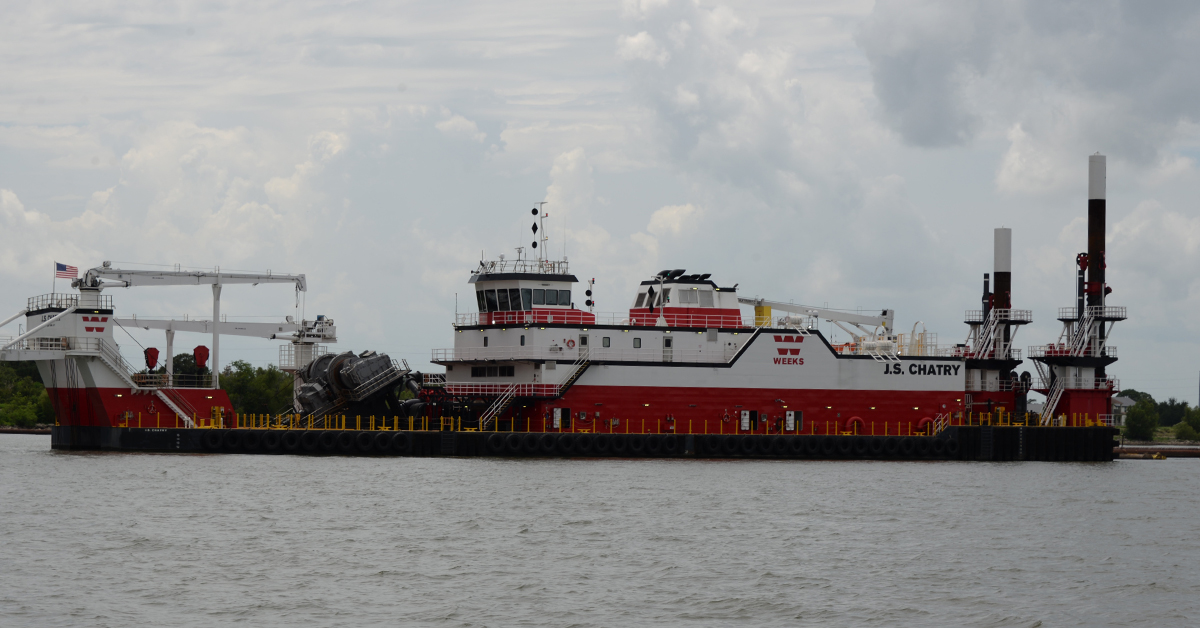With the Lower Mississippi River hovering around 3 feet at the Carrollton Gage in New Orleans, the New Orleans Engineer District has announced plans to build an underwater sill across the Mississippi River Ship Channel near Myrtle Grove, La., to slow the upriver movement of salt water from the Gulf.
This will be the fourth year in a row that low water conditions have necessitated construction of the sill.
A wedge of salt water moving upstream along the bottom of the Mississippi River is a natural occurrence, with salt water denser than fresh water and the riverbed below Natchez, Miss., below sea level. Under normal, higher-flow conditions, the Mississippi River prevents salt water from progressing far enough upriver to threaten municipal and industrial fresh water intakes. In low water, though, especially with a number of breaks in the east bank of the river in Plaquemines Parish, the wedge of salt water is able to move upstream.
The trigger for the New Orleans District to begin construction of the sill is when the toe of the salt water wedge is forecast to reach River Mile 80 above Head of Passes within the next 28 days.
The sill, basically an underwater berm across the river, will be built at its usual location at River Mile 64 near Myrtle Grove, La., using sediment dredged from a designated borrow area. Once the Corps awards the contract, it will take about two weeks to construct the sill.
Matt Roe with the New Orleans District’s public affairs office said he expected the contract to be awarded within days. The sill will be built to a depth of -55 feet, which equates to a physical height above the river bottom of about 40 to 45 feet, he said.
“The only impacts from the sill construction are the navigation restrictions issued by the Coast Guard for one-way traffic at the site of the sill,” Roe said. “We will work closely with the Coast Guard and navigation industry through this low-water event as the Mississippi River and the ports in south Louisiana connect the Midwest to the global market.”
Roe said that, at this time, the district doesn’t plan to immediately employ the innovation from 2023, when extreme low water led engineers to raise the sill to a depth of 30 feet on the sides with a 55-foot-deep shipping lane in the middle.
“If the low-water conditions continue, we do have the option of augmenting the sill again to arrest progression of the salt water wedge,” Roe said. “We are still early in this event, so at this time, we do not know if the sill augmentation will be required.”



